 Abraham Lincoln
If given the truth, the people can be depended upon to meet any national crisis...
Abraham Lincoln
If given the truth, the people can be depended upon to meet any national crisis...
 Guildford news...
for Guildford people, brought to you by Guildford reporters - Guildford's own news service
Guildford news...
for Guildford people, brought to you by Guildford reporters - Guildford's own news service
Opinion: Internet Shopping Could Breathe New Life Into Our Town
Published on: 28 Jan, 2013
Updated on: 28 Jan, 2013
Many commentators are waking up to the fact that buying goods over the internet is presenting a huge challenge to our traditional high street shops. We are living through what is nothing short of a shopping revolution. Some even say that high streets and town centre shops are doomed…
by Martin Giles and David Rose
The recent closures of Guildford town centre shops such as JJB Sports, Early Learning Centre, Blacks, La Senza, Blockbusters and HMV might have been hastened by the economic situation – but the root cause lies deeper.
Town centre shops have already been significantly affected by out-of-town supermarkets, but further change, caused primarily by the increasing use of internet shopping, is inevitable.
Here’s our vision for the look of Guildford town centre in 10 years’ time:
- No bookshops
- No record shops
- No hardware stores
- No furniture or furnishings stores
- No newsagents (printed newspapers, especially local ones, will be a thing of the past)
- No banks or building societies (transactions mostly will be done on line. Face-to-face contact over internet)
- Fashion stores will remain (people like to try on things before they buy, not possible on internet).
- More cafes, restaurants and bars (the town centre will become a place of entertainment and for social gathering)
- A significant increase of independent food shops selling specialist up-marked products as well as locally grown produce
Does that shock or scare you?
What does it matter? Should we do anything about it? Is there anything we can do about it?
Or should we simply leave it the overall market forces and allow things to find their own level?
History and past events can tell us a good deal about retailing trends.
Just over one hundred years ago Sainsbury’s arrived in Guildford: the first national chain to make an entrance (albeit a much smaller concern in those days). Considering the railway arrived in 1845, it might be surprising that there was such a long wait for this development. But communications and the rate of change were slower than today and the culture of local businesses, locally owned, often by owners who lived over the premises, had been firmly established over centuries.
We normally look back on earlier times with affection, remembering the best, while shutting out and forgetting some of the worst. But there seems to be consensus that the UK’s high streets, even before the rise of the internet, were becoming homogenised identikits with the same chains appearing in countless towns the length of the country, some even across the globe.
And as all this was happening we realised that the development of areas of our town was overdue. So we are now definitely at a cross roads, but there are no clear route signs and no guarantee that as a town we will choose the right direction.
Even skilled planners will not be able to look into the future with any degree of certainty and I would caution against those confidently say they can, but if we want to end up with a town that remains attractive, lively and healthy what is to be done?
Until the railway came, Guildford really was a small market town, intimately linked to agriculture which was carried out right up to the town boundary, as street names such as Buryfields and Sandfield reveal. Its population was small and the migration into cities and towns from farms and villages, although started, had yet to have it’s full impact, locally.
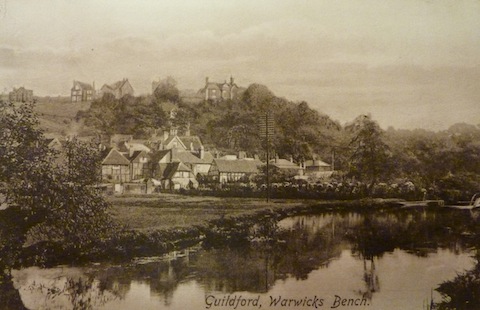
A 1900s picture postcard looking towards Warwick’s Bench and showing the Millmead area when fields reached right up to the town centre.
The level of wealth was much lower. Food and shelter could not be taken for granted, as they are by most of us today. There was a growing middle class that wanted luxury goods but it was relatively small. Most coming into the town from its hinterland would want foodstuffs, practical clothes or the materials to make them as well as agricultural supplies.
Of course, they would also want to socialise and with less demand for goods there was more space for drinking establishments; 30 inns and pubs on the High Street alone, it is said.
The sudden expansion of the town, started by the railways, and closely coupled with its proximity to London, was not planned. As the population grew so did the demand for goods, the number of shops and their profitability.
Increasing affluence and cheap labour in the Victorian period allowed those few in the monied strata to invest in the decorated higher quality buildings that some of us still admire today.
Although the Castle Grounds were secured for the town by a far sighted, town surveyor, Henry Peak (actually a Londoner by birth), a town square or other public spaces were not created.
Guildford was very much a market town but without a market square. The market was small and until 1865 accommodated in the High Street. It then moved to the street that had developed along the old ditch at the back of the gardens belonging to the houses on the High Street; Upper Back Side, as it was known.
Here the market was less constrained, but increasing expansion, more traffic and perhaps the inconvenience of having a market on a public street (after all where there are animals there is muck) meant that in 1895 it moved again, this time to Woodbridge Road, which many of us can remember, but it was not a traditional market square.
We lament the fact that our river banks have been so poorly and unattractively developed but the river was seen as a practical, rather than a recreational, asset. Water power had been used since Saxon times to drive mills. Then, in the 17th century, the river was one of the earliest to be canalised. In the 19th century, after the Industrial Revolution, the river attracted light industry such as the foundry where the Yvonne Arnaud Theatre now stands.
It was all logical and, in its way, natural. It is what we term ‘progress’. Nothing stands still, we should not expect it to. But neither should we feel we are powerless to direct it. ‘Progress’ could have caused the castle ruins to have been demolished and the grounds sold for development, they nearly were.
Fortunately, someone, Henry Peak, had the vision to realise what a wonderful public amenity the grounds could be. Countless Guildfordians and visitors have enjoyed them ever since.
We need just that kind of thinking today. Of course we want the town to remain successful commercially but its attractiveness is crucial in meeting that aim. If we create a remarkable public space, people will come to see and enjoy it from inside and outside our borough: they will spend money and the town will continue to prosper.
The major retailing changes we are seeing might lead to less demand for town centre retail space. If some shops remain empty and more difficult to let presumably business rents and business rates (a major revenue stream for the council, by the way) will have to fall, in real terms at least.
But if this would be a problem to investors and the council it could be a major opportunity for the town. Businesses that are not competing with those on the internet would become more profitable, we might see more restaurants, coffee and tea shops, even pubs, as the social and entertainment functions of the town centre remain and become more economically viable.
There will, of course remain demand for some shops. Many will want to see, feel and try on some goods before they buy, which will be one reason why women’s fashion, for example, remains well represented in the town centre today. Some shops might become more like showcases for goods that can be orederd in-store, or pre-ordered online at home.
According to a current television series Harry Selfridge, an American who a century ago created Selfridges on Oxford Street, was among the first to realise the importance of entertainment in retail. Many existing retailers still understand that. The psychology of selling is a well studied subject, it directly affects profitability. It is something that town centre shops will still be able to provide. One advantage they can still use over online competitors.
But whatever the future does hold we should not be fearful, believing we have no power to influence decisions. Our council needs to be reminded that it is not just about commercial development, important though that is. The town is not just a business it is a community that needs places for us to meet away from our solitary computer screens, however efficient and convenient they become.
Together with organisations such as The Guildford Society, the Guildford Vision Group and the various residents’ associations, the council must fully engage with the townspeople and develop our town in a way that protects our heritage, exploits the town’s potential and has public support.
There will undoubtedly be challenges and difficult decisions. But given sufficient will power and imagination, we have the wit to surmount the obstacles. We can build an even better town one that future generations will be proud of, enjoy and even be thankful to us for.
What do you think? What are your predictions for the future of Guildford’s High Street? What should the council do? Please have your say by using the ‘Leave a Reply’ feature below.
Responses to Opinion: Internet Shopping Could Breathe New Life Into Our Town
Leave a Comment Cancel replyPlease see our comments policy. All comments are moderated and may take time to appear.

"Found any?" - "Nope, it all looks green to me!" (See Opinion: The Future is Congested, the Future is Grey)
www.abbotshospital.org/news/">





Recent Articles
- Latest Evidence in Sara Sharif Trial
- Ash’s New Road Bridge Is Named – and November 23rd Is Opening Day
- Class A in Underwear Leads to Jail Sentence
- Historical Almshouse Charity Celebrates Guildford in Bloom Victory
- Notice: Shalford Renewable Showcase – November 16
- Firework Fiesta: Guildford Lions Club Announces Extra Attractions
- Come and Meet the Flower Fairies at Watts Gallery
- Updated: Royal Mail Public Counter in Woodbridge Meadows to Close, Says Staff Member
- Letter: New Developments Should Benefit Local People
- Open Letter to Jeremy Hunt, MP: Ash’s Healthcare Concerns


Recent Comments
- Paul Spooner on Ash’s New Road Bridge Is Named – and November 23rd Is Opening Day
- Harry Eve on Opinion: The Future is Congested, the Future is Grey
- Nigel Keane on Letter: New Developments Should Benefit Local People
- Nathan Cassidy on Updated: Royal Mail Public Counter in Woodbridge Meadows to Close, Says Staff Member
- T Saunders on Opinion: The Future is Congested, the Future is Grey
- Jim Allen on Updated: Royal Mail Public Counter in Woodbridge Meadows to Close, Says Staff Member
Search in Site
Media Gallery
Dragon Interview: Local Artist Leaves Her Mark At One of England’s Most Historic Buildings
January 21, 2023 / No Comment / Read MoreDragon Interview: Lib Dem Planning Chair: ‘Current Policy Doesn’t Work for Local People’
January 19, 2023 / No Comment / Read MoreA3 Tunnel in Guildford ‘Necessary’ for New Homes, Says Guildford’s MP
January 10, 2023 / No Comment / Read More‘Madness’ for London Road Scheme to Go Ahead Against ‘Huge Opposition’, Says SCC Leader
January 6, 2023 / No Comment / Read MoreCouncillor’s Son Starts Campaign for More Consultation on North Street Plan
December 30, 2022 / No Comment / Read MoreCounty Council Climbs Down Over London Road Works – Further ‘Engagement’ Period Announced
December 14, 2022 / No Comment / Read MoreDragon Interview: GBC Reaction to the Government’s Expected Decision to Relax Housing Targets
December 7, 2022 / No Comment / Read MoreHow Can Our Town Centre Businesses Recover? Watch the Shop Front Debate
May 18, 2020 / No Comment / Read More



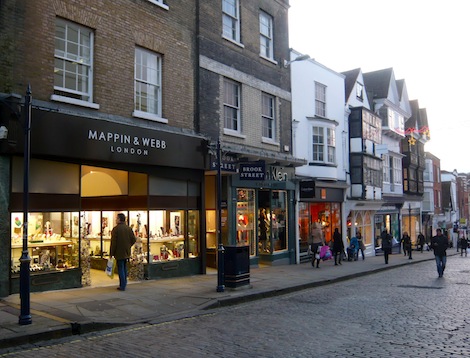

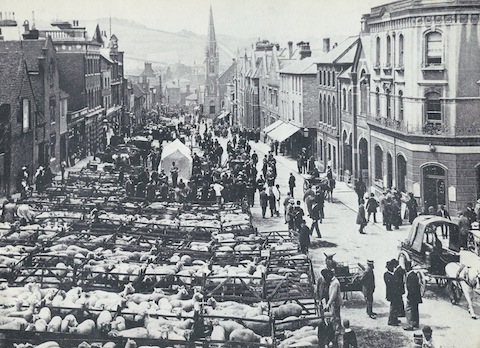
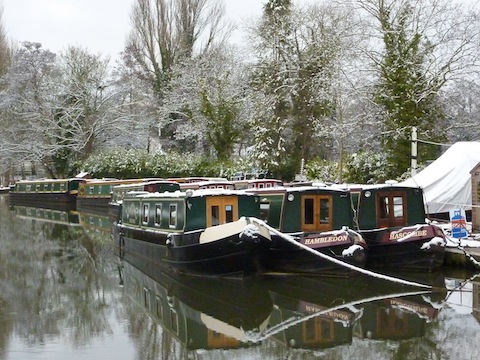

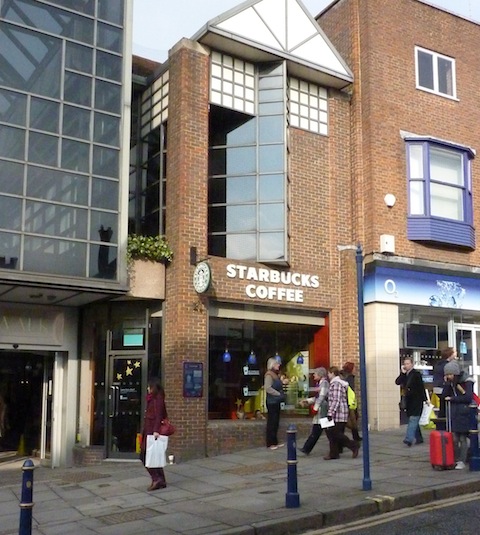




Pauline Surrey
January 31, 2013 at 1:12 pm
Excellent article! Do so hope rents fall, so that we can still have bookshops/hardware shops/record shops/furniture shops/banks/building societies etc in our towns. You can’t surely buy a sofa online without having sat in it, or a door handle without having felt it, or a handbag without having examined the quality of the leather and workmanship, can you??? Would also love to see a replacement town centre drop in place for senior citizens, such a pity the two in town were closed down!
Caroline Reeves
January 31, 2013 at 11:08 pm
I agree with Pauline Surrey’s comments, and wonder why some landlords/owners prefer to have empty retail units for a length of time rather than lower the rent? Business rates aren’t flexible, shop rents should be in the current climate. And yes to a replacement drop in centre. When I ask what’s happening I have been told there are lots of places for older people to go but have yet to be told where they are.